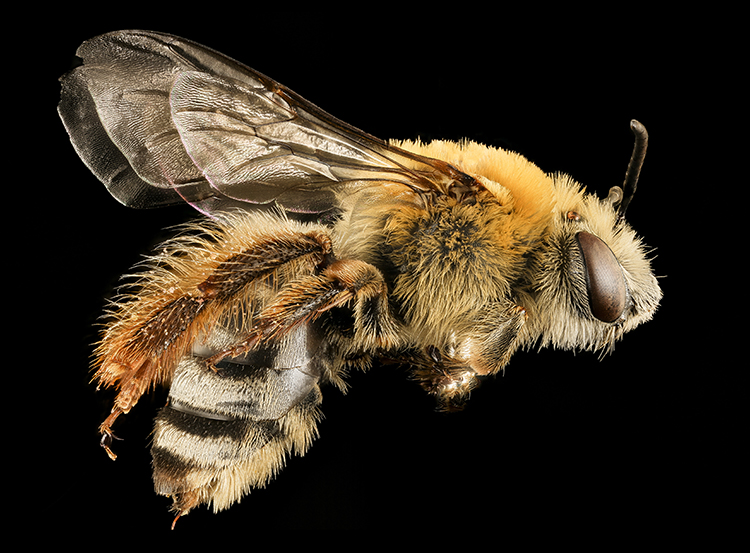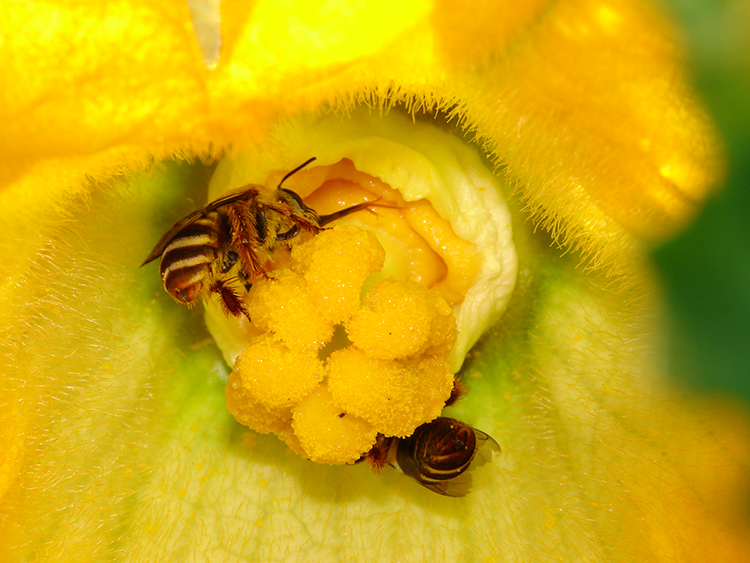The squash bee, as the name implies, specializes in pollinating squash flowers (members of the genus Cucurbita). So when you’re showing off that zucchini the size of a baseball bat or carving a pumpkin in the fall, you have this insect to thank.
“Even though [the squash plants] are visited for nectar by honeybees and bumblebees, the only ones that actually collect the pollen are squash bees,” explains Margarita López-Uribe, Ph.D., an assistant professor of entomology at Penn State University.
Squash bees “are about honeybee size, but they are a lot hairier,” says López-Uribe, a physical feature that might help them conserve heat on chilly mornings. Squash flowers open for about six hours starting at dawn. The squash bees are there first, sometimes starting their commute before the sun rises, according to López-Uribe.

Squash bees are single parents, like the vast majority of Pennsylvania’s 450 various bee species.
“If we are talking about the biology of bees, honeybees are very different from most bees. Squash bees better represent the biology of most bees,” says López-Uribe.
The female squash bee digs a burrow for her offspring, and at the end of it builds a compartment for each larva. She combines the pollen and nectar she’s gathered into a pellet, lays one egg on it and then seals up the chamber. The eggs will hatch and the larvae will grow by eating the pollen and nectar cakes. They will emerge the next summer as adults, just as the squash blossoms begin to bloom.
The squash plants we grow and eat descend from a wild gourd species that originally grew around what is now western Missouri. This means, like the squash plants they depend on, squash bees were once immigrants to the Philadelphia area.
López-Uribe has tracked their movement over centuries by looking at the insects’ genes. In a 2016 study, she and her co-authors found that the squash bees in eastern North America descended from populations in the Midwest, where one of the squash plant species (Cucurbita pepo, which includes acorn squash, carving pumpkins and most summer squash) was domesticated.
The bees moved north and east as squash cultivation spread among Indigenous peoples.
“This means that humans, by moving crops, have been letting these bees expand their ranges,” says López-Uribe. “We think that the presence of squash bees in this part [of the continent] could be as recent as 500 to 2,000 years.”
Thus, the squash bees that pollinate our pumpkins, butternuts and zucchini today got here thanks to the farming choices of our Indigenous predecessors.
López-Uribe and her team are continuing their research around squash bees. Ph.D. student Laura Jones is investigating how honey and bumblebees might spread diseases to squash bees in commercial farms, and post-doctoral researcher Kristen Brochu is trying to figure out if local squash bees have lost their taste for their original host plants.
You can observe squash bees yourself by setting your alarm for dawn and watching your squash blossoms. If you’re early enough, there should be only one type of bee inside your squash flowers. They’ll be roughly the size of a honeybee but with narrower bands on their abdomen.



